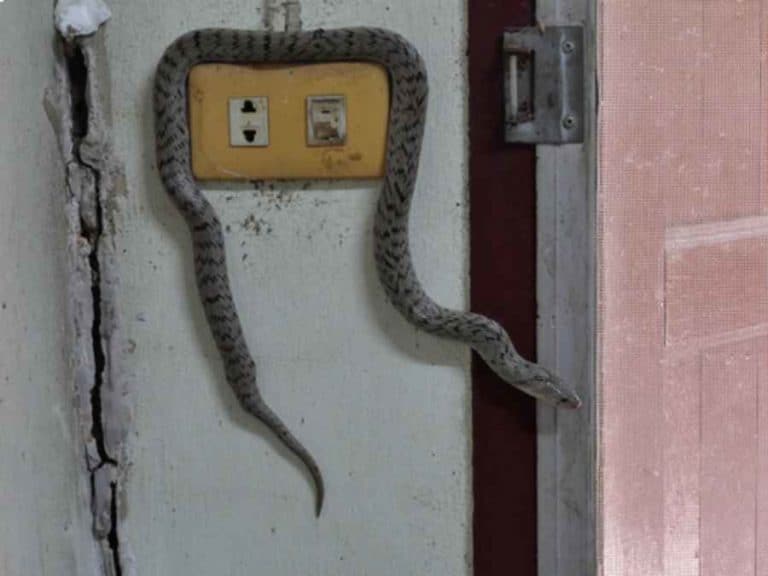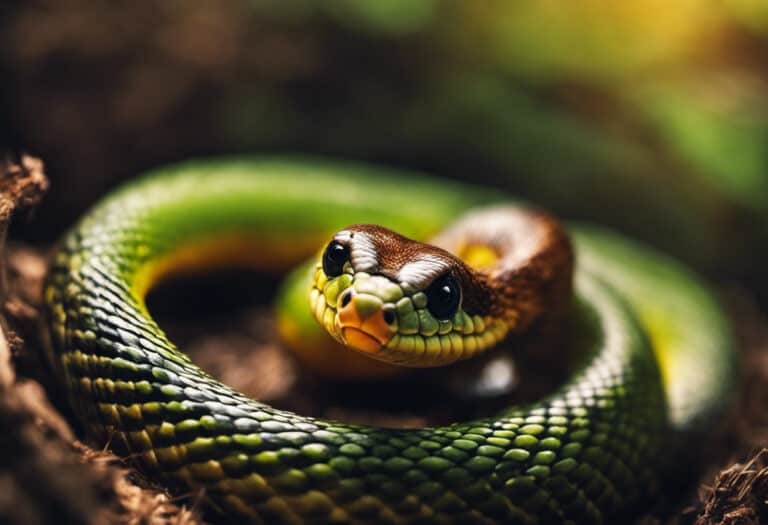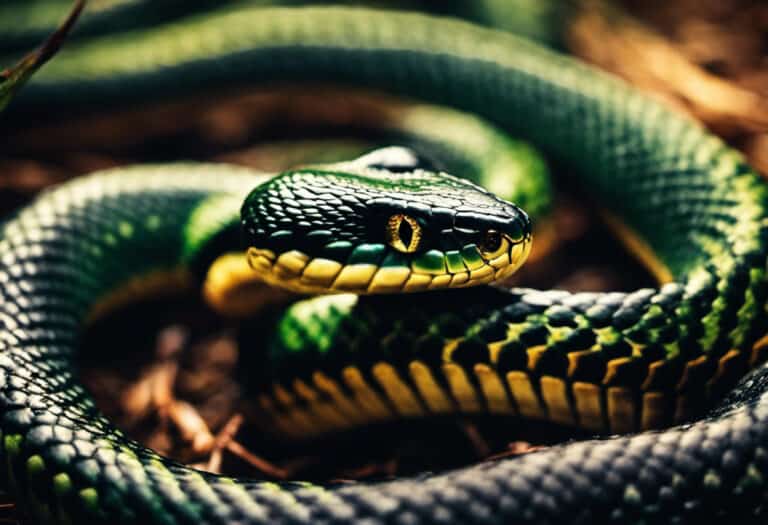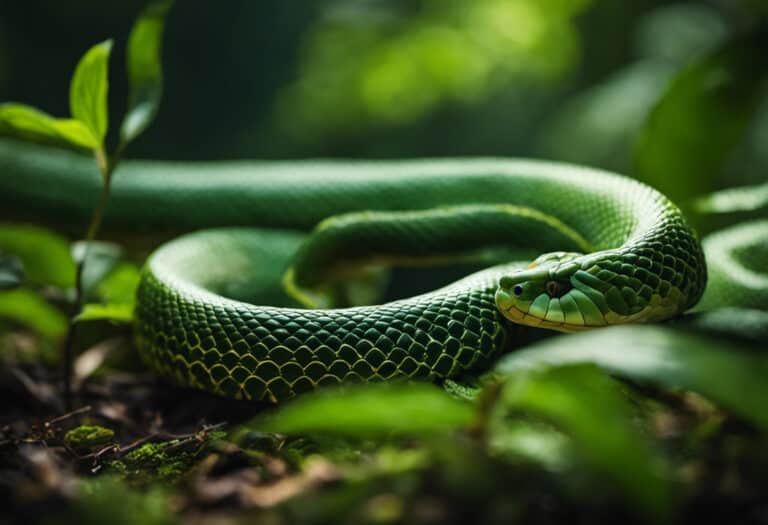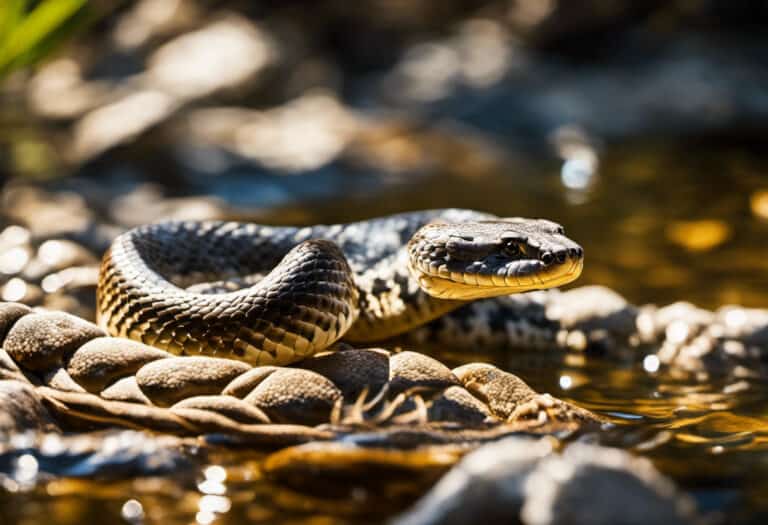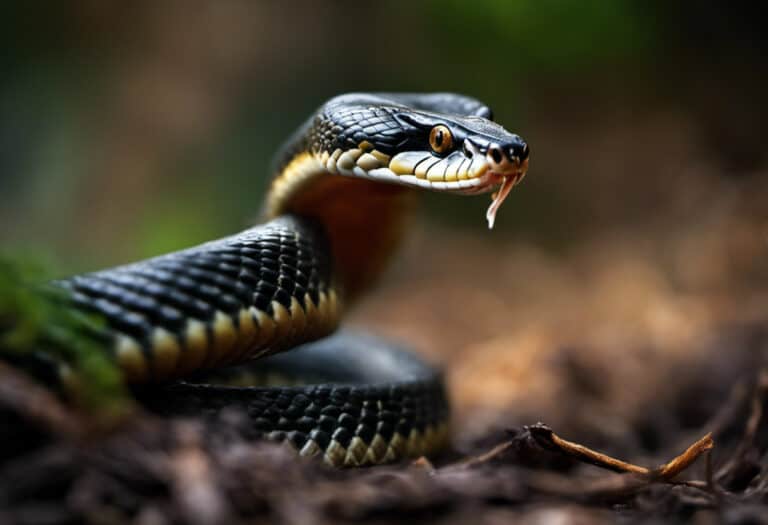What Do Ground Snakes Eat?
Curious about the culinary preferences of ground snakes? Well, get ready to be amazed! These sleek creatures, residing in the Red Cliffs Desert Reserve, have a diverse palate that includes spiders, scorpions, crickets, and grasshoppers.
With their excellent sense of smell, they skillfully hunt their prey during the night, while spending most of their time underground. Plus, they’re territorial, fiercely guarding their burrows.
So, if you’re yearning for a taste of knowledge, join us as we delve into the intriguing world of ground snake dining habits.
Key Takeaways
- Ground snakes primarily eat spiders, scorpions, crickets, grasshoppers, and other small invertebrates.
- They rely on their excellent sense of smell to locate potential meals.
- Ground snakes are opportunistic feeders, taking advantage of the abundance of small invertebrates.
- The availability of prey greatly affects ground snake populations.
Diet of Ground Snakes
Ground snakes, in their diet, consume spiders, scorpions, crickets, grasshoppers, and other small invertebrates.
These snakes are skilled hunters and use various techniques to capture their prey.
They rely on their excellent sense of smell to locate potential meals.
Once a ground snake detects its prey, it will stealthily approach and strike with precision, using its sharp teeth to deliver a quick and deadly bite.
The impact of their diet on the health of ground snakes is significant. Consuming a diverse range of small invertebrates ensures that these snakes receive the necessary nutrients for their growth and survival.
The protein from spiders and scorpions helps in muscle development, while the carbohydrates from crickets and grasshoppers provide energy for their activities.
A balanced diet contributes to the overall health and well-being of ground snakes, allowing them to thrive in their natural habitat.
Feeding Habits of Ground Snakes
If you come across a ground snake, you’ll find that their diet consists of spiders, scorpions, crickets, grasshoppers, and other small invertebrates. These snakes have unique feeding patterns and hunting techniques that help them survive in their environment. Here’s what you need to know:
- Ambush predators: Ground snakes are opportunistic hunters that rely on their camouflage and patience to catch their prey. They wait in hidden spots, such as under rocks or in vegetation, until their unsuspecting prey comes within striking distance.
- Sense of smell: These snakes have a keen sense of smell that helps them locate their prey. They use their flickering tongue to pick up scent particles in the air and on the ground, allowing them to track down potential meals.
- Quick strikes: When a ground snake spots its prey, it swiftly strikes with its sharp teeth, injecting venom to immobilize or kill the prey. This venom helps in the digestion of the prey and makes it easier for the snake to consume.
- Varied diet: Ground snakes have a diverse diet, which includes different types of invertebrates. This flexibility in their feeding habits allows them to adapt to changes in their environment and ensures a steady supply of food.
Understanding the feeding patterns and hunting techniques of ground snakes provides insight into their survival strategies. By adapting their hunting strategies based on the availability of prey, these snakes can thrive in various habitats.
Prey of Ground Snakes
When you encounter a ground snake, you’ll be surprised by the wide range of prey they consume. Ground snakes, with their hunting techniques and adaptability, have a significant impact on their populations.
These snakes rely on their excellent sense of smell to locate their prey, which includes spiders, scorpions, crickets, and grasshoppers.
They are opportunistic feeders, taking advantage of the abundance of small invertebrates in their environment.
However, the availability of prey can greatly affect ground snake populations. If their primary food sources become scarce, their numbers may decrease as they struggle to find enough food to sustain themselves.
Conversely, when prey is abundant, ground snake populations can thrive and expand. This illustrates the delicate balance between prey availability and the survival of these fascinating creatures.
| Prey of Ground Snakes | Hunting Techniques |
|---|---|
| Spiders | Ambush |
| Scorpions | Constriction |
| Crickets | Pursuit |
| Grasshoppers | Camouflage |
Food Sources for Ground Snakes
You’ll be interested to know that the food sources for ground snakes include spiders, scorpions, crickets, and grasshoppers. These small invertebrates make up the majority of their diet.
Ground snakes are skilled hunters and have developed unique hunting techniques to capture their prey. They use their keen sense of smell to locate their targets, relying on their olfactory senses to track down spiders hiding in crevices and scorpions lurking in the soil.
When hunting crickets and grasshoppers, ground snakes rely on their quick reflexes and agility to capture their fast-moving prey.
The availability of these food sources greatly impacts ground snake populations. If there’s a decrease in prey availability, ground snake populations may decline due to lack of food.
On the other hand, an abundance of prey can support larger populations of ground snakes. So, the availability of spiders, scorpions, crickets, and grasshoppers plays a crucial role in the survival and population dynamics of ground snakes.
Eating Behavior of Ground Snakes
Their eating behavior is characterized by their preference for small invertebrates such as spiders, scorpions, crickets, and grasshoppers. Ground snakes employ a variety of hunting techniques to capture their prey. They use their sense of smell to locate potential meals, relying on the chemical cues emitted by their prey.
Once located, ground snakes exhibit stealthy movements, approaching their prey with precision. With a quick strike, they immobilize their prey using their sharp teeth.
The impact of diet on the behavior of ground snakes is significant. Their consumption of small invertebrates provides them with the necessary energy and nutrients to maintain their active lifestyle. Their diet also influences their territorial behavior, as they defend their hunting grounds and burrows from other snakes.
Frequently Asked Questions
How Do Ground Snakes Find Their Prey?
Ground snakes use their excellent sense of smell to locate prey. They employ various hunting techniques, such as climbing and swimming, to catch small invertebrates like spiders, scorpions, and crickets. They are territorial and defend their burrows.
Do Ground Snakes Eat Other Types of Snakes?
Ground snakes do not typically eat other types of snakes. They have a specific hunting technique and unique adaptations to prey on spiders, scorpions, crickets, and grasshoppers.
Are Ground Snakes Known to Scavenge for Food?
Ground snakes are not known to scavenge for food. They primarily eat insects such as spiders, scorpions, crickets, and grasshoppers. Their feeding habits consist of hunting small invertebrates and using their sense of smell to locate prey.
Can Ground Snakes Go for Long Periods Without Eating?
Ground snakes have long term survival strategies to cope with fasting. Fasting can have physiological effects on their bodies. They have adapted to withstand long periods without eating, ensuring their survival in challenging environments.
Do Ground Snakes Have Any Predators?
Ground snakes do have natural enemies. Predators include birds of prey, larger snakes, and mammals. To defend themselves, ground snakes rely on their camouflage, ability to burrow, and quick escape maneuvers.
Conclusion
In conclusion, ground snakes have a diverse diet consisting of small invertebrates such as spiders, scorpions, crickets, and grasshoppers. They’re skilled hunters, utilizing their excellent climbing and swimming abilities to locate and capture their prey.
These fascinating creatures play a crucial role in the ecosystem of the Red Cliffs Desert Reserve. Despite potential threats to their habitat, conservation efforts are in place to protect and preserve these remarkable snakes.
Remember, when it comes to survival, ground snakes are as sly as a fox, adapting to their environment and thriving in their unique niche.
